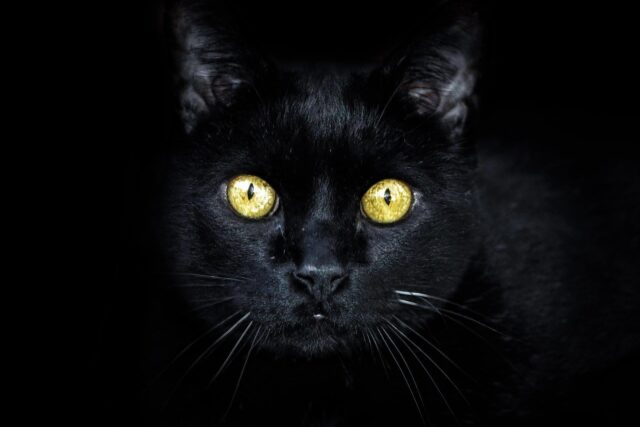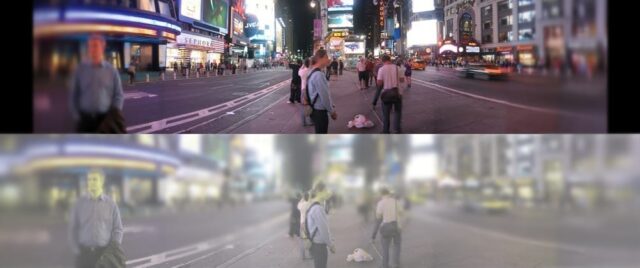Cats are purrfect in all ways.
Just ask any cat lover and they’ll count the way cats reign over us. But, here’s a surprise.
For all their ability to pounce a skittering lizard or fluttery butterfly, cats don’t have the eagle-eye acuity we might have thought.
Human and feline eyes are built differently and the result of these differences gives us some strengths in vision over cats. But those differences also give them a paw up over our eyes in other ways. And it all comes down to differences in the human and feline retina.
Lining the back of the eye, the retinal tissue contains photoreceptor cells that relay light to the brain. These photoreceptors are what we know as rods and cones. Cones are responsible for daytime vision and the way we perceive color. Rods sends signals from the peripheral vision, detect brightness, discern shades of gray, and allow for night vision.
While both humans and cats have rods and cones, their distribution differs with cats having more rods than cones. The distribution is flipped in the human eye. This difference in photoreceptors leads cats to see the world quite differently than us.
Artist Illustrates How Cats See the World
Graphic artist Nickolay Lamm wanted to illustrate how cats saw the world, so he consulted with veterinary experts regarding feline vision. Using the facts he learned, Lamm created a series of photos showing how cats see versus how we see when it comes to peripheral vision, distance, color perception, and night vision.
When viewing these comparisons, remember, human vision is displayed on the top with the feline version on the same scene on bottom.
Visual Field
Cats have a wider visual field at 200 degrees when compared to our 180 degrees, enabling them take in a bigger picture. See the blacked-out sides on the top picture? That’s where our sight stops and we can see the feline view takes in a little more.
Image Courtesy of Nickolay Lamm
Acuity
At your annual eye exam, you and your ophthalmologist strive to get your vision to 20/20 with the help of glasses and contacts. The best a cat can hope for when reading the eye chart is 20/100 or 20/200. What does this mean?
Imagine a bowl of cat kibble sitting 100 feet away. Most likely you can see it clearly from this distance. In order for a cat to see that same bowl with clarity, he would have to be 20 feet away from it. By our standards, cats need glasses to see long distances!
Image Courtesy of Nickolay Lamm
Color
Contrary to what many believe, cats do see in color. Cats are trichromats like humans, meaning we all see red, green, and blue thanks to three different types of cones. But the feline cone responsible for seeing green doesn’t view this color very brightly as they are spaced far apart in a cat’s eye. Cats come closer to seeing green as dogs and color-blind people might. And when considering the whole color spectrum, since cats have fewer cones than humans, they can’t view colors in the same rich hues we can.
Image Courtesy of Nickolay Lamm
Day and Night
Cats do have us beat when it comes to the dark though. They may not have the acuity we do for distance and color, but low light leaves us stumbling around while cats nimbly navigate the dark. While we have the more cones for daytime vision, cats have an abundance of rods which allows them to see better in the dark.
Felines area also suited for night vision thanks to the tapetum lucidum. A reflective layer found behind the retina, the cells of the tapetum can be compared to mirrors which allow light to bounce back forth between cones and rods. And by the way, the tapetum is what makes cat eyes glow in the dark.
Image Courtesy of Nickolay Lamm
Image Courtesy of Nickolay Lamm
While their eyes may not be their sharpest feature, felines have highly developed senses of smell and hearing that work with their vision to create an accurate picture of the world. Plus, whiskers contain sensory receptor cells making them like another set of eyes in a sense. So while they might not see the best, cats are highly developed predators that have no problem snatching up anything that piques their interest!
Please SHARE to pass on this story to a friend or family member.






